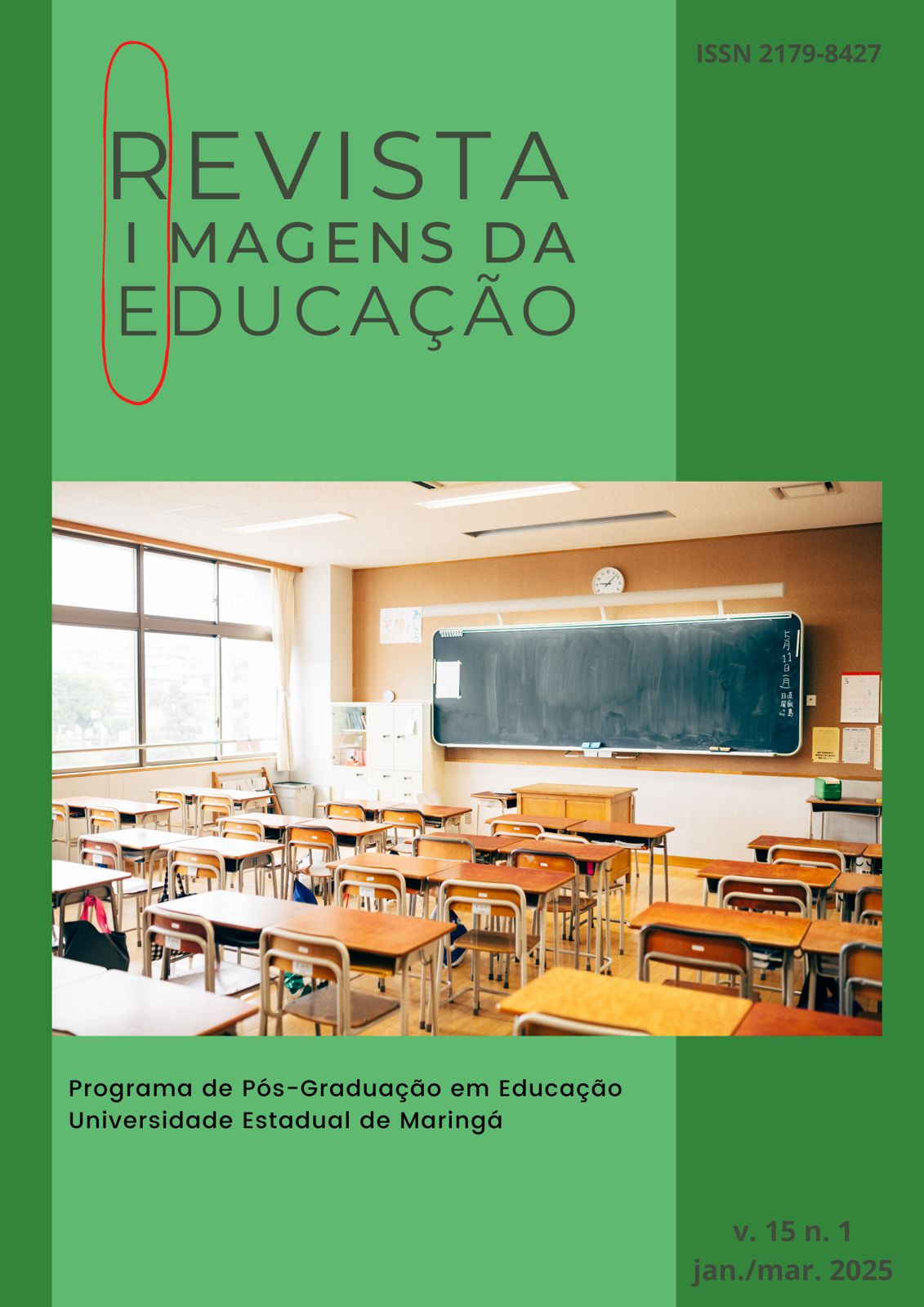SOBRE AUSÊNCIAS E PRESENÇAS DO CLITÓRIS EM LIVROS DIDÁTICOS
Resumo
O objetivo deste estudo foi investigar o processo de transposição didática (TD) da estrutura clitoridiana, em sete livros de Ciências da Natureza e suas Tecnologias, recomendados pelo Programa Nacional do Livro e do Material Didático, ano 2021. Realizamos uma análise comparativa entre a TD referente ao clitóris e ao pênis, por meio de uma matriz analítica baseada no modelo KVP, do inglês, K (knowledge), V (values) and P (practices), e constituída pelos seguintes critérios: representações imagéticas (em secção sagital da pelve, visão frontal e quando isolados do corpo humano) e representações textuais. Os resultados evidenciaram lacunas nas representações de elementos anatomofisiológicos relacionados ao clitóris, diferentemente do que observamos em relação ao pênis. Identificamos um predomínio de imagens do corpo humano seccionado que não fornecem uma visualização adequada da estrutura clitoridiana e constatamos que a maioria dos LDs representa a glande do clitóris como se fosse o órgão em sua totalidade. Além disso, os elementos textuais indicaram que a TD da estrutura clitoridiana se distancia do conhecimento científico de referência, oferecendo uma abordagem superficial, insuficiente para provocar uma discussão crítica sobre o órgão.
Downloads
Referências
Carvalho, G. S. (2009). A transposição didática e o ensino da biologia. In A. M. A. Caldeira & E. S. N. N. Araújo (Orgs.), Introdução à didática da biologia (p. 34-57). São Paulo, SP: Escrituras.
Chalker, R. (2001). A Verdade Sobre o Clitóris: o mundo secreto ao alcance da sua mão. Rio de Janeiro, RJ: Imago.
Clément, P. (2006). Didactic Transposition and KVP Model: Conceptions as interactions between scientific knowledge, values and social practices. In ESERA Summer School, Instituto de Educação da Universidade do Minho (p. 9-18). Braga, Portugal.
Di Marino, V., & Lepidi, H. (2014). Anatomic Study of the Clitoris and the Bulbo-Clitoral Organ. London, UK: Springer.
Fernández, M. L., Fernández, M. V. C., & Castro, Y. R. (2013). El clítoris y sus secretos. Vigo, Espanha: Difusora de Letras, Artes e Ideas.
Furlani, J. (2008). Mulheres só fazem amor com homens? A educação sexual e os relacionamentos entre pessoas do mesmo sexo. Pro-Posições, 19(2), 111–131.
Hernando, A. C. (1999). Cunnus: Repressões e insubmissões do sexo feminino. Lisboa: Antígona.
Jara, I. C. (2019). Mutilação cognitiva do clitóris: regimes de verdade sobre o corpo sexuado da fêmea humana (Dissertação de Mestrado). Universidade Federal de São Carlos, São Carlos.
Ladislau Filha, C. S., & Ribeiro, G. (2016). The approach to sexuality in PNLD textbooks: a focus on STI/AIDS and condoms. Ciência & Educação, 22, 773-788.
Laqueur, W. T. (2001). Inventando o sexo: corpo e gênero dos gregos a Freud. Rio de Janeiro: Relume Dumará.
Lima Soares, E. de, Carrozoni Lopez Viçosa, C. S., Castro Pessano, E. F., & Folmer, V. (2018). As Representações do corpo humano nos livros didáticos de ciências. Góndola, Enseñ Aprend Cienc, 13(1), 55-72.
Machado, M. S., & Sepúlveda, C. A. S. (2021). Sistema reprodutor feminino e masculino, há uma diferença em suas abordagens? Uma análise de livros didáticos através do modelo KVP. Bio-grafía, 17(número extraordinário), 1-7.
Moore, L. J. & Clarke, A. E. (1995). Clitoral Conventions and Transgressions: Graphic Representations in Anatomy Texts, c1900-1991. Feminist Studies, 21(2), 255-301.
O'Connell, H. E., Sanjeevan, K. V., & Hutson, J. M. (2005). Anatomy of the clitoris. The Journal of Urology, 174, 1189-1195.
Ogletree, S. M., & Ginsburg, H. J. (2000) Kept Under the Hood: Neglect of the Clitoris in Common Vernacular. Sex Roles, 43(11-12), 917-926.
ONU – Organização das Nações Unidas. (2008). Combate mutilação genital feminina. ONU News. Recuperado em 23 de abril de 2023, de https://news.un.org/pt/story/2008/02/1245021.
Ribeiro, G., Ferreira, R.A., Bonfim, C. T. C., & Eloy, C. (2019). Sexualidade nos livros didáticos: análises e proposições baseadas em aspectos imagéticos. Ensino, Saúde e Ambiente, 12 (1) 99-122.
Santana, M. C. S., & Waldhelm, M. C. V. (2009). Abordagem da sexualidade humana em livro didático de ciências – desvelando os bastidores de uma proposta. Ensino, Saúde e Ambiente, 2(2), 2-20.
Soares, A. G., & Paraíso, M. A. (2023). Gênero e sexualidade no currículo da pedagogia. Imagens da Educação, 13(1), 54-76.
Wolfe, M. (2018). Materialising effects of difference in sex education: the ‘absurd’ banana penis. Gender and Education, 30(8), 1065-1077.
Copyright (c) 2025 Imagens da Educação

This work is licensed under a Creative Commons Attribution-NonCommercial-NoDerivatives 4.0 International License.
Declaro que o presente artigo é original, não tendo sido submetido à publicação em qualquer outro periódico nacional ou internacional, quer seja em parte ou em sua totalidade. Declaro, ainda, que uma vez publicado na revista Imagens da Educação,ele não será submetido por mim ou pelos demais co-autores a outro periódico. Por meio deste instrumento, em meu nome e dos co-autores, cedo os direitos autorais do referido artigo à Revista e declaro estar ciente de que a não observância deste compromisso submeterá o infrator a sanções e penas previstas na Lei de Proteção de Direitos Autorias (Nº 9609, de 19/02/98).















1.png)

